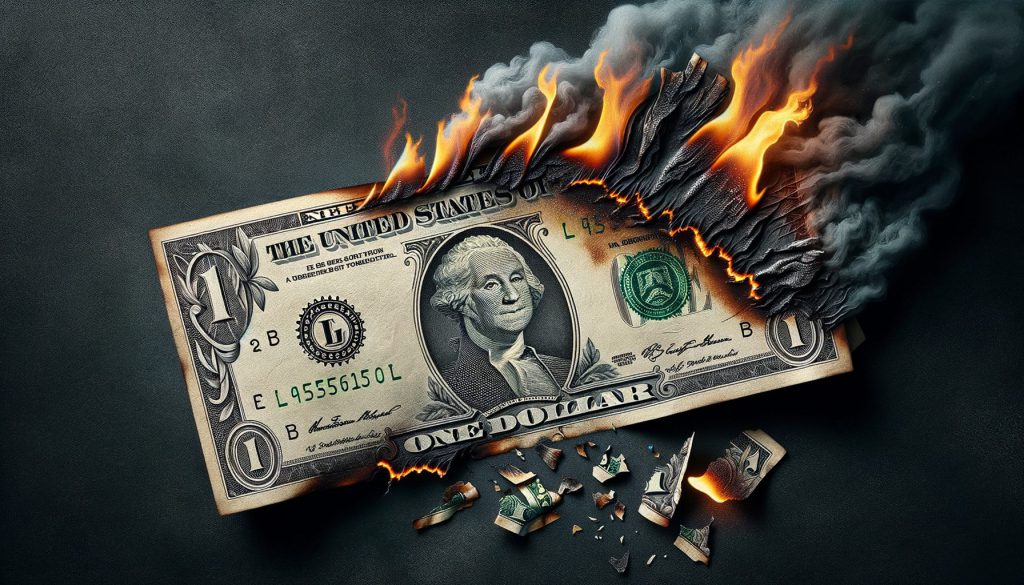Nomura’s Richard Koo Predicts Controlled Demise of the US Dollar—Crypto Bulls Smirk
The greenback’s days as the undisputed reserve currency might be numbered—but don’t expect a messy collapse. Nomura’s sharp-eyed Richard Koo foresees an ’orderly’ decline for the USD, a slow bleed rather than a dramatic crash.
Funny how ’orderly’ never applies to crypto markets—where 20% swings before breakfast keep things spicy. Traders, meanwhile, are already hedging with Bitcoin and gold, because nothing says ’faith in the system’ like a decentralized fallback plan.
Koo’s take? A measured retreat as global economies diversify. Translation: the Fed’s monopoly on financial chaos is finally getting some competition. Pack your bags, dollar hegemony—your soft landing just got interesting.
Debt, Yields And Tariffs Signal Controlled US Dollar Weakness

Manufacturing Data Confirms Dollar Weakness
The ISM manufacturing index dropped to 48.5 in May, and this marks continued sector contraction that’s fueling concerns about the US dollar to fall scenario. This manufacturing data represents more than just economic weakness – it signals underlying structural issues that currency markets are beginning to price in at the time of writing.
Treasury yields climbed to 4.97% on the 30-year bond as demand softened, creating an unusual situation where higher yields aren’t supporting dollar strength. Treasury Secretary Scott Bessent moved quickly to address market concerns about US debt sustainability, and also to reassure investors.
Richard Koo said regarding historical patterns:
Steel tariffs announced at 50% on imports have already triggered aluminum premiums to surge 54% and steel futures to rise 14%. These trade measures are reshaping market expectations about the US dollar to fall trajectory, and also creating inflationary pressures.
Central Bank Policies Miss Currency Targets
Koo’s analysis reveals why traditional forecasting fails when predicting whether the US dollar to fall will materialize. His research shows that central bank policies often produce opposite results from what economists expect, and also demonstrates the complexity of currency markets.
Richard Koo stated this about policy effectiveness:
This observation highlights how treasury yields and interest rate policies don’t always translate into currency strength. Manufacturing data continues to show weakness despite higher rates, suggesting the Federal Reserve’s tools have limited impact on economic fundamentals right now.
The steel tariffs represent an attempt to address trade imbalances, but they’re also creating inflationary pressures that could accelerate the US dollar to fall scenario. Current US debt levels make traditional monetary policy less effective at supporting currency stability, and also complicate the Federal Reserve’s decision-making process.
Trade Deficits Drive Currency Psychology
The relationship between trade policy and currency markets goes beyond simple supply and demand. Koo explained how presidential rhetoric about trade deficits creates market psychology that influences the US dollar to fall expectation, and also affects investor sentiment.
Richard Koo explained this market dynamic:
This insight shows how steel tariffs and trade policies create psychological pressure on currency markets. Manufacturing data supports this view, with production declining across multiple sectors as trade tensions escalate, and also as global supply chains adjust.
Treasury yields continue rising as investors demand higher compensation for holding US debt, but this isn’t translating into dollar strength at the time of writing. The combination of weak manufacturing data and aggressive trade policies is creating conditions for the US dollar to fall scenario that Koo predicts.
Richard Koo had this to say about government intervention:
This suggests any significant acceleration in the US dollar to fall trend WOULD require international coordination. Current steel tariffs and rising treasury yields are creating market pressures, but Koo expects an orderly decline rather than crisis-driven weakness. Manufacturing data and US debt concerns support this controlled adjustment scenario, and also indicate that policymakers have time to manage the transition.

